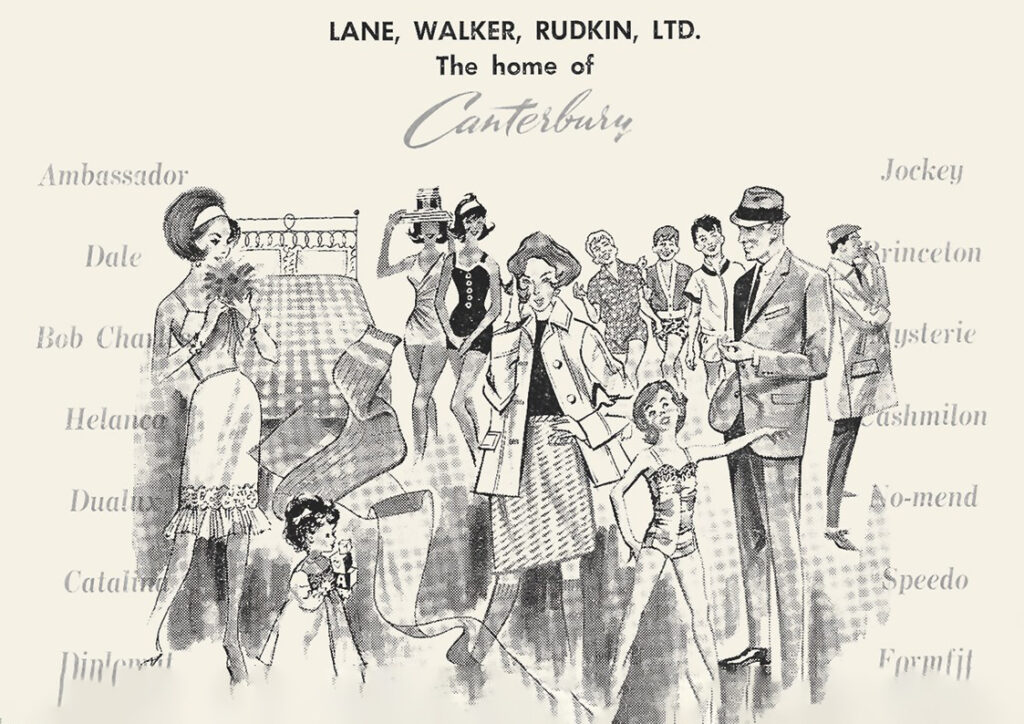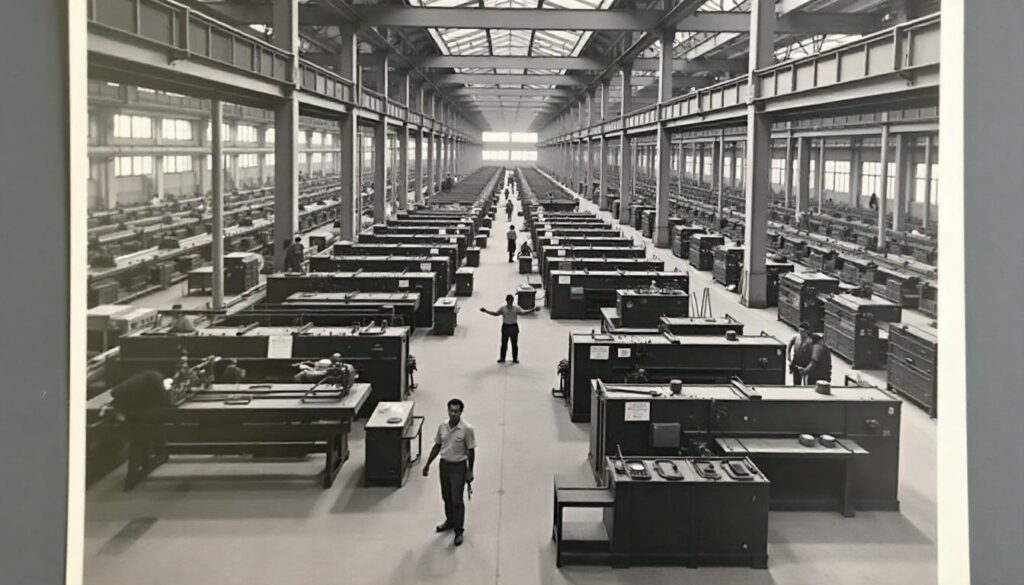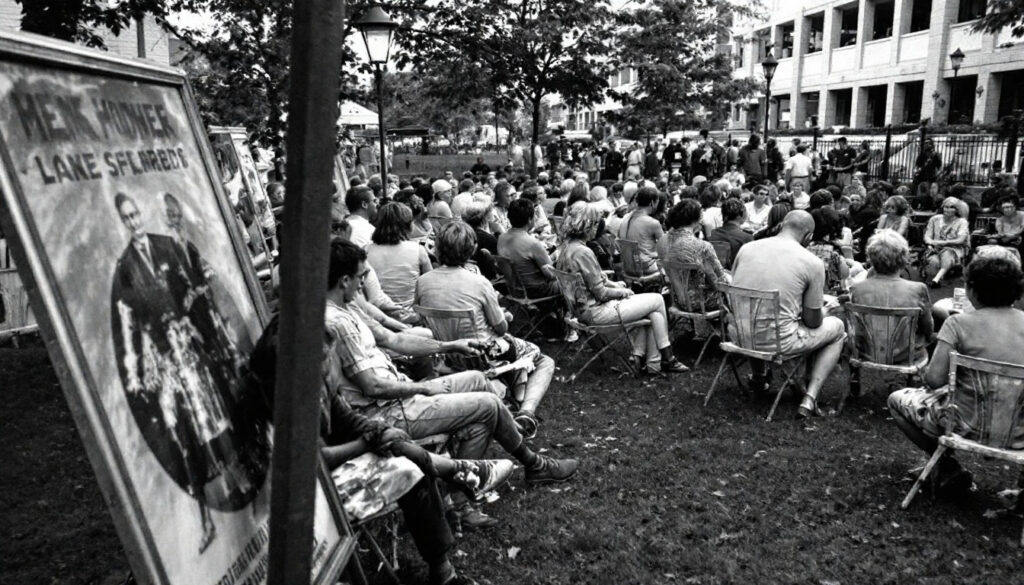Lane Walker Rudkin
Lane Walker Rudkin (LWR) was once a cornerstone of New Zealand’s textile and clothing industry. Known for its high-quality garments and sportswear, LWR’s legacy spans over a century of innovation, craftsmanship, and resilience. This article delves into the fascinating history, rise, challenges, and lasting impact of Lane Walker Rudkin.

The Origins of Lane Walker Rudkin
Lane Walker Rudkin was founded in 1904 in Christchurch, New Zealand. The company started as a small knitting mill, producing hosiery and woolen garments for the local market. Over time, LWR grew into a prominent player in the textile industry, supplying garments not just locally but also internationally.
Key Milestones in LWR’s History
- 1904: Establishment of the company by founder Cecil Lane Walker.
- 1920s-1930s: Expansion into sportswear and uniforms.
- 1940s: Contribution to the war effort by producing military uniforms and equipment.
- 1960s-1980s: Collaboration with global brands and entry into international markets.
These milestones highlight LWR’s adaptability and commitment to excellence.
The Rise of a Textile Giant
During the mid-20th century, Lane Walker Rudkin became synonymous with quality and reliability. The company produced a wide range of products, including:
- Sportswear: LWR was the official supplier for New Zealand’s All Blacks rugby team, cementing its reputation for high-performance athletic wear.
- School Uniforms: Many schools across New Zealand relied on LWR for durable and well-crafted uniforms.
- Fashion Apparel: The company introduced stylish yet practical clothing lines for everyday wear.

Global Collaborations
LWR partnered with renowned international brands such as Adidas and Puma. These collaborations allowed the company to leverage global expertise while showcasing its own craftsmanship.
Challenges and Decline
Despite its success, Lane Walker Rudkin faced significant challenges in the late 20th and early 21st centuries. These included:
- Globalization: The rise of cheap manufacturing in countries like China and India made it difficult for LWR to compete on price.
- Economic Pressures: Financial difficulties began to mount, leading to reduced production capacity.
- Management Issues: Poor financial management and strategic missteps exacerbated the company’s struggles.
In 2009, LWR was placed into receivership, marking the end of an era for the iconic brand.
LWR’s Contributions to the War Effort
During World War II, Lane Walker Rudkin played a pivotal role in supporting New Zealand’s military forces. The company shifted its focus to produce essential supplies for soldiers, including:
- Military Uniforms: Durable and weather-resistant garments designed to endure harsh conditions.
- Knitted Accessories: Socks, gloves, and scarves that provided comfort and warmth to troops stationed in colder climates.
- Specialized Gear: Items like canvas bags and other field equipment essential for military operations.
This period demonstrated LWR’s ability to adapt to the nation’s needs during times of crisis. The company’s contributions earned widespread respect and strengthened its reputation as a reliable and community-focused enterprise.

The Role of Innovation in LWR’s Success
Lane Walker Rudkin’s commitment to innovation was a key factor in its success. The company invested heavily in research and development to stay ahead of industry trends. Some notable innovations included:
- Advanced Fabrics: LWR pioneered the use of blended materials, combining natural fibers like wool with synthetic alternatives to enhance durability and comfort.
- Efficient Manufacturing Processes: The company adopted cutting-edge machinery and production techniques to improve efficiency and reduce waste.
- Custom Design Services: LWR offered tailored solutions for clients, allowing schools, sports teams, and businesses to create unique, branded apparel.
These innovations not only enhanced product quality but also solidified LWR’s position as a leader in the textile industry.
The Legacy of Lane Walker Rudkin
Although the company no longer operates, its legacy lives on in several ways:
1. Influence on New Zealand’s Textile Industry
Lane Walker Rudkin set the standard for quality and innovation in textiles, inspiring a new generation of designers and manufacturers.
2. Vintage Appeal
LWR garments are now sought after by collectors and vintage enthusiasts, reflecting the enduring appeal of the brand’s craftsmanship.
3. Lessons in Business Resilience
The rise and fall of LWR offer valuable lessons about the importance of adaptability and sound financial management in a changing global market.
4. Community and Heritage
The factories and workers associated with Lane Walker Rudkin have left an indelible mark on the community. Families who relied on the company for generations fondly remember the camaraderie and pride associated with producing quality garments. Local museums and heritage sites often feature exhibits about LWR, preserving its history for future generations.

Why Lane Walker Rudkin Still Matters
In today’s fast-paced fashion industry, the story of Lane Walker Rudkin serves as a poignant reminder of the value of quality, heritage, and community. As consumers increasingly prioritize sustainability and ethical production, the principles that once defined LWR are more relevant than ever.
Key Takeaways for Modern Businesses
- Focus on Quality: High-quality products stand the test of time.
- Adaptability: Embracing change is essential for long-term success.
- Community Engagement: Building strong ties with local communities fosters loyalty and support.
- Heritage Branding: Companies with a storied history can leverage their legacy to create a unique brand identity that resonates with consumers seeking authenticity.
Lane Walker Rudkin’s Influence on Textile Innovation
The legacy of Lane Walker Rudkin (LWR) goes far beyond its branding as a textile powerhouse. This iconic company played a pivotal role in shaping not only New Zealand’s manufacturing industry but also global standards in textile innovation. Its story is a testament to the evolution of craftsmanship, industrial growth, and the resilience of businesses in ever-changing markets.
Foundations in Craftsmanship and Quality
At its core, LWR stood as a symbol of quality craftsmanship. Founded in Christchurch, New Zealand, in the early 20th century, the company initially focused on producing hosiery and knitwear. What set LWR apart from its competitors was its dedication to precision and the use of superior materials. This commitment earned it a loyal customer base that spanned generations.
The company’s emphasis on quality wasn’t merely a marketing strategy—it was ingrained in its production processes. Skilled artisans and advanced machinery worked in harmony to create garments that were not only stylish but also durable. This blend of traditional techniques and modern technology allowed LWR to consistently exceed customer expectations.
Adaptation to Changing Market Needs
One of the most remarkable aspects of LWR’s history was its ability to adapt to changing consumer preferences and technological advancements. While it began as a small-scale manufacturer, the company quickly expanded its product lines to include sportswear, school uniforms, and high-performance clothing.
- Sportswear Revolution: During the mid-20th century, the rise of competitive sports and outdoor activities created a demand for specialized clothing. LWR seized this opportunity by designing functional yet fashionable sportswear, becoming a trusted supplier for athletes and enthusiasts alike.
- School Uniforms: Understanding the need for durable and affordable uniforms, LWR developed fabrics that could withstand daily wear and tear, further cementing its reputation for quality.
- High-Performance Textiles: By investing in research and development, LWR introduced innovative fabrics that offered features like moisture-wicking, breathability, and thermal regulation.
These efforts not only kept the company relevant but also positioned it as a leader in textile innovation.

Impact on the Local Economy
Lane Walker Rudkin’s contributions extended beyond its products; it was a cornerstone of New Zealand’s economy for decades. At its peak, the company employed thousands of workers across multiple facilities, providing stable jobs and fostering community development.
- Job Creation: From factory workers to designers, LWR offered employment opportunities that helped uplift local families and communities.
- Support for Local Suppliers: By sourcing raw materials locally whenever possible, the company strengthened its ties to New Zealand’s agricultural and industrial sectors.
- Export Success: LWR’s ability to compete on the international stage brought recognition to New Zealand’s manufacturing capabilities, boosting the country’s reputation globally.
Challenges and Lessons Learned
Despite its many successes, Lane Walker Rudkin faced significant challenges in its later years. The advent of globalization introduced intense competition from low-cost manufacturers, forcing the company to rethink its strategies.
- Global Competition: The rise of international brands offering cheaper alternatives led to a decline in LWR’s market share.
- Economic Pressures: Increasing operational costs and fluctuating demand created financial strain, making it difficult for the company to sustain its operations.
- Resilience and Reinvention: While LWR eventually faced closure, its legacy serves as a reminder of the importance of adaptability and innovation in the face of adversity.
A Legacy That Lives On
Today, Lane Walker Rudkin’s story continues to inspire businesses and entrepreneurs. Its commitment to quality, innovation, and community impact remains a blueprint for success in the textile industry. By learning from its achievements and challenges, modern companies can navigate the complexities of global markets while staying true to their values.
Final Thoughts
Lane Walker Rudkin’s story is one of triumph, challenge, and legacy. While the company may no longer be operational, its impact on New Zealand’s textile industry and its lessons for modern businesses remain profound. By remembering and learning from LWR, we can honor its contributions and apply its principles to today’s dynamic and ever-evolving market.
Whether you’re a history enthusiast, a business professional, or someone passionate about textiles, the story of Lane Walker Rudkin offers valuable insights and inspiration.
About Us
Welcome to Lane Walker Rudkin,
Your go-to informative resource for niche industry insights. We are committed to providing our readers with well-researched, educational content that delves deep into specific topics. Our goal is to offer clear, reliable information that helps you stay informed and make knowledgeable decisions. Whether you’re seeking expert advice or detailed articles, we strive to be your trusted source of valuable knowledge.
